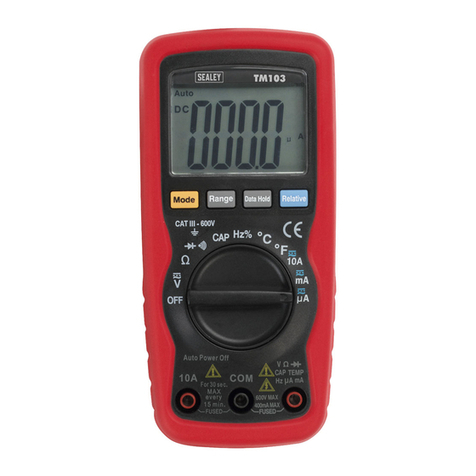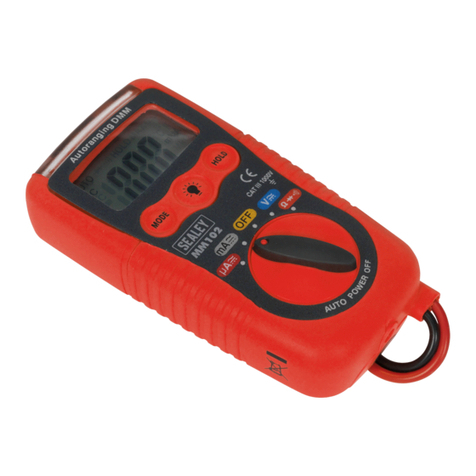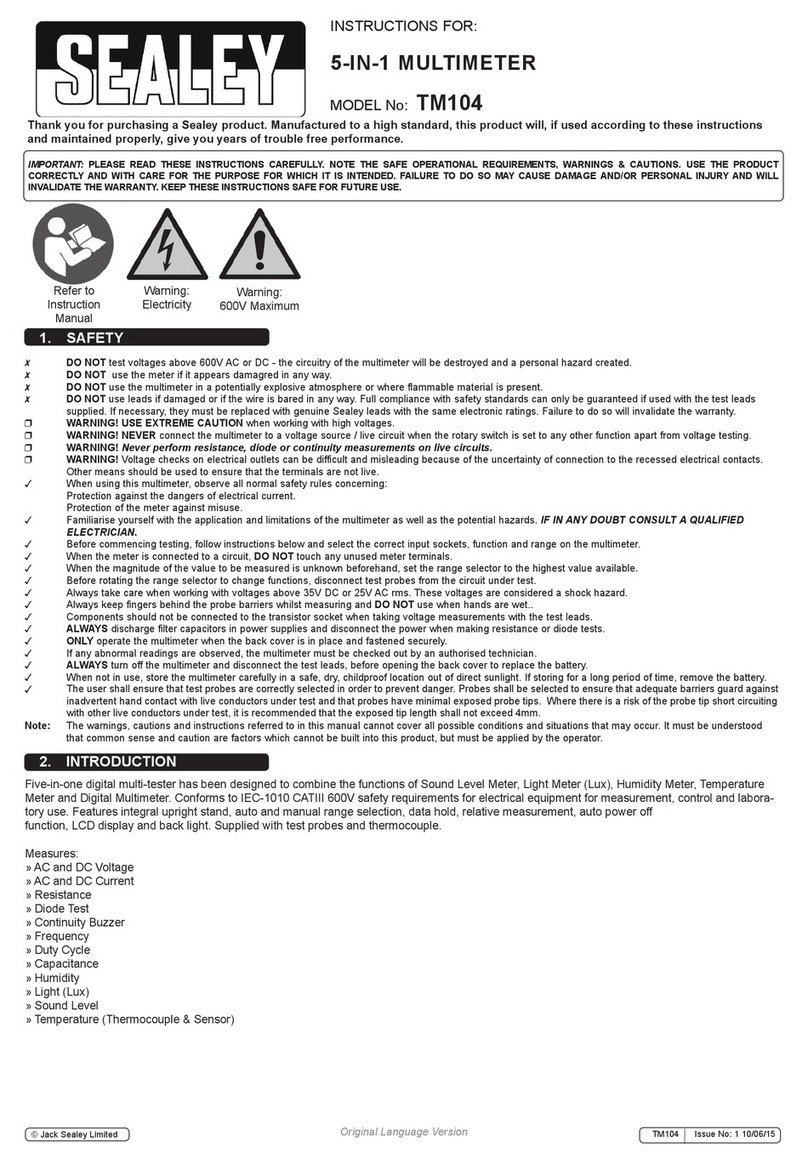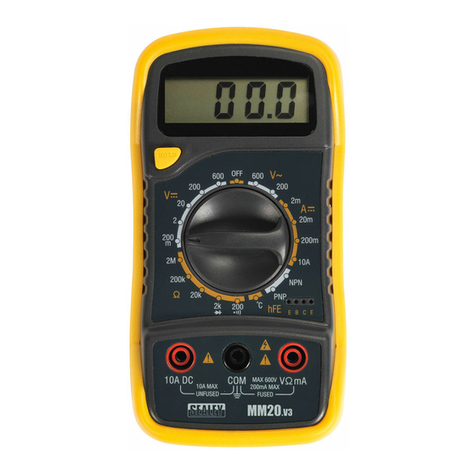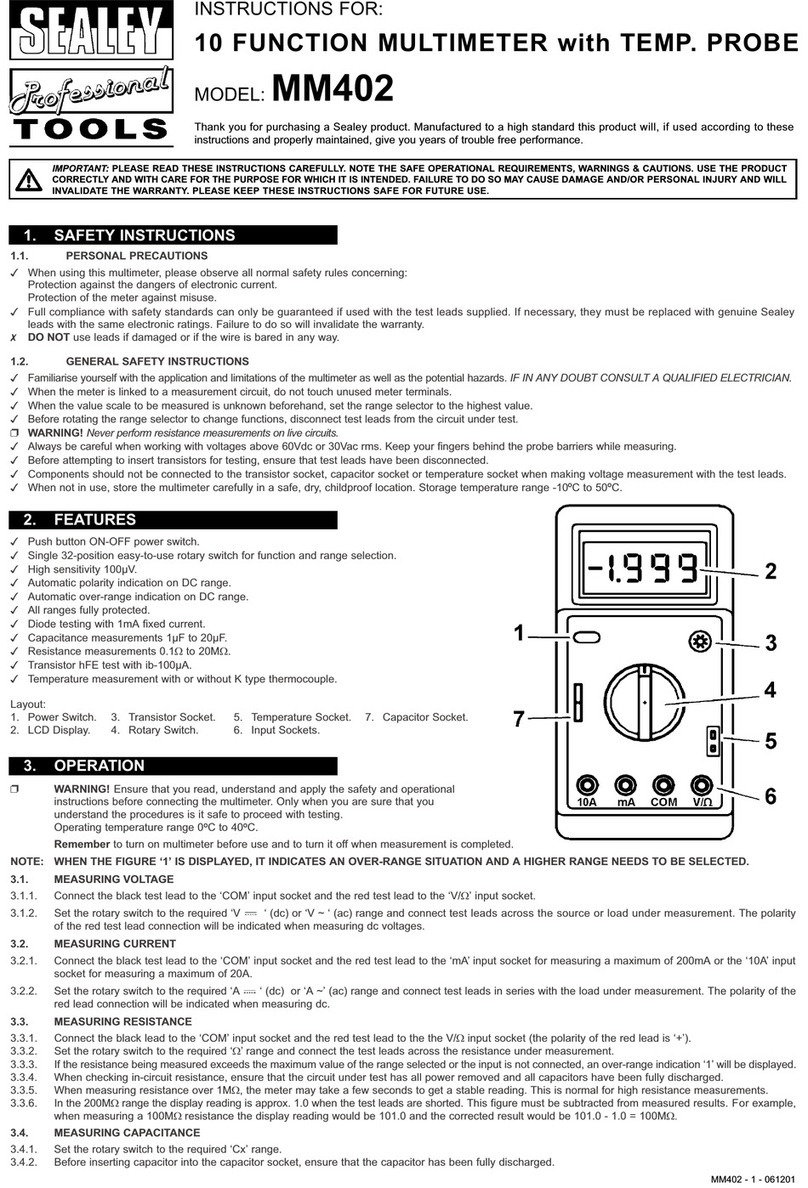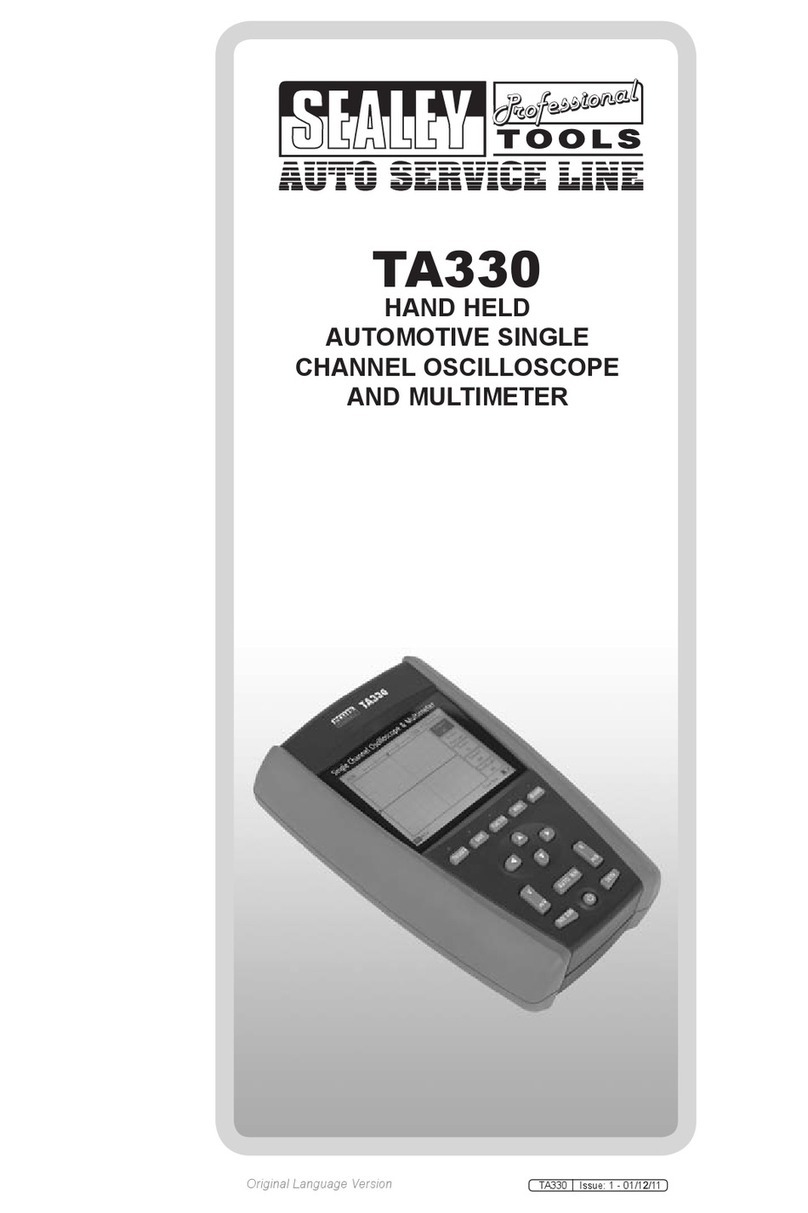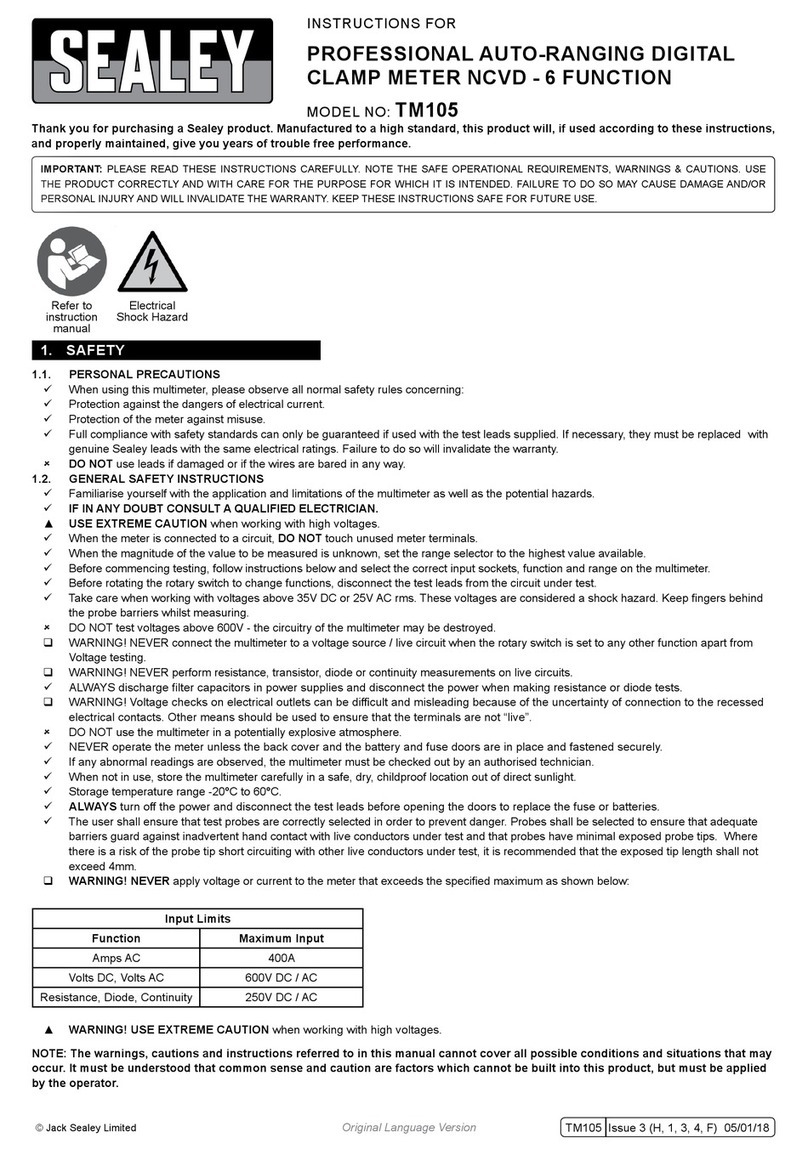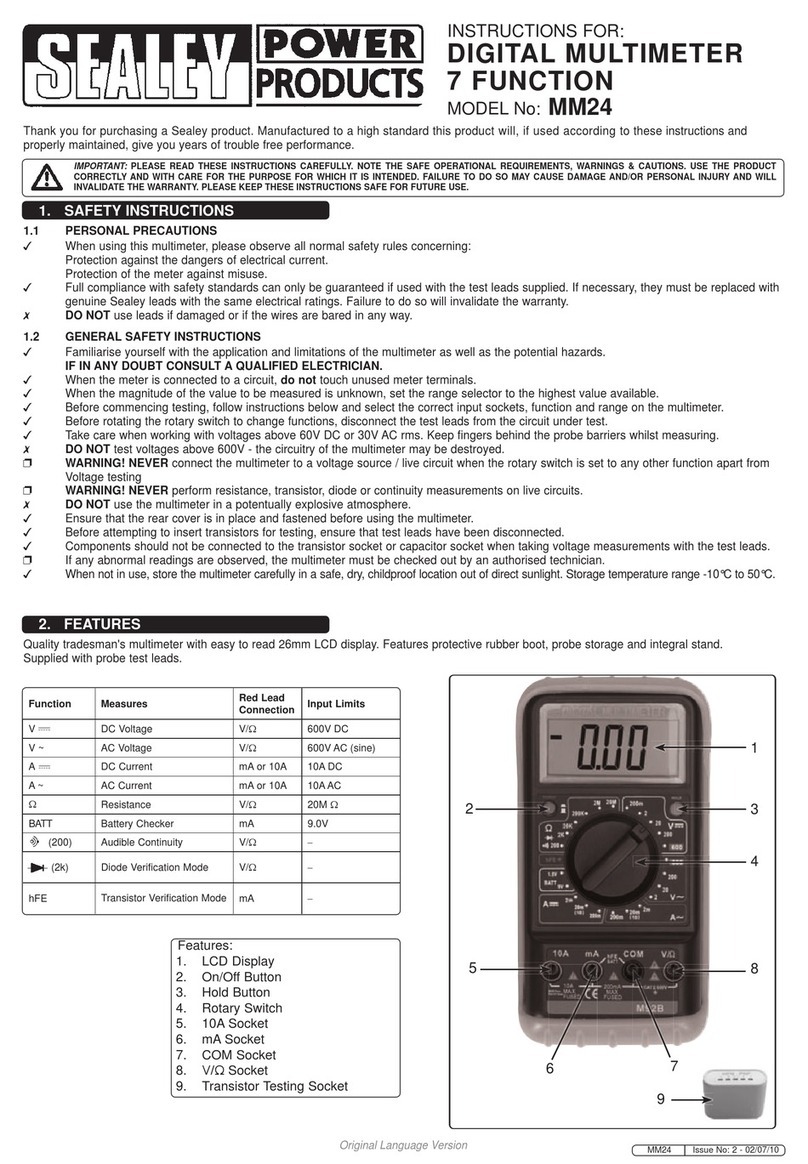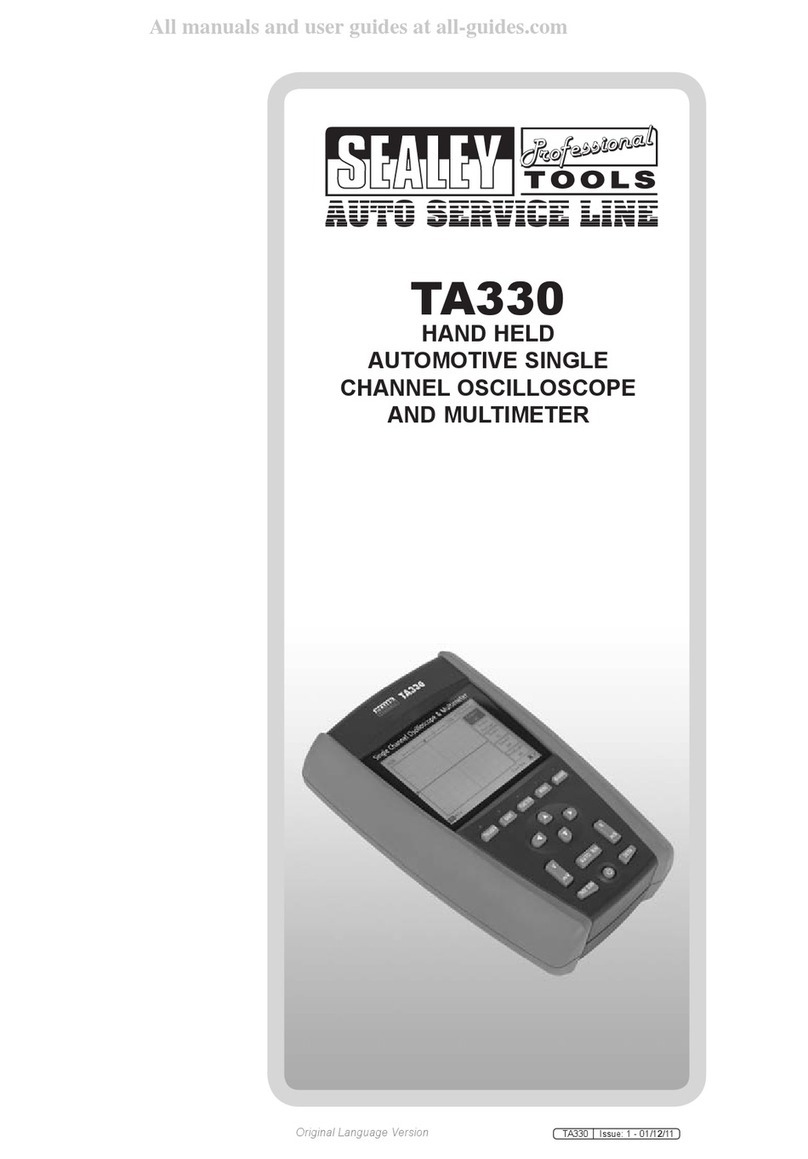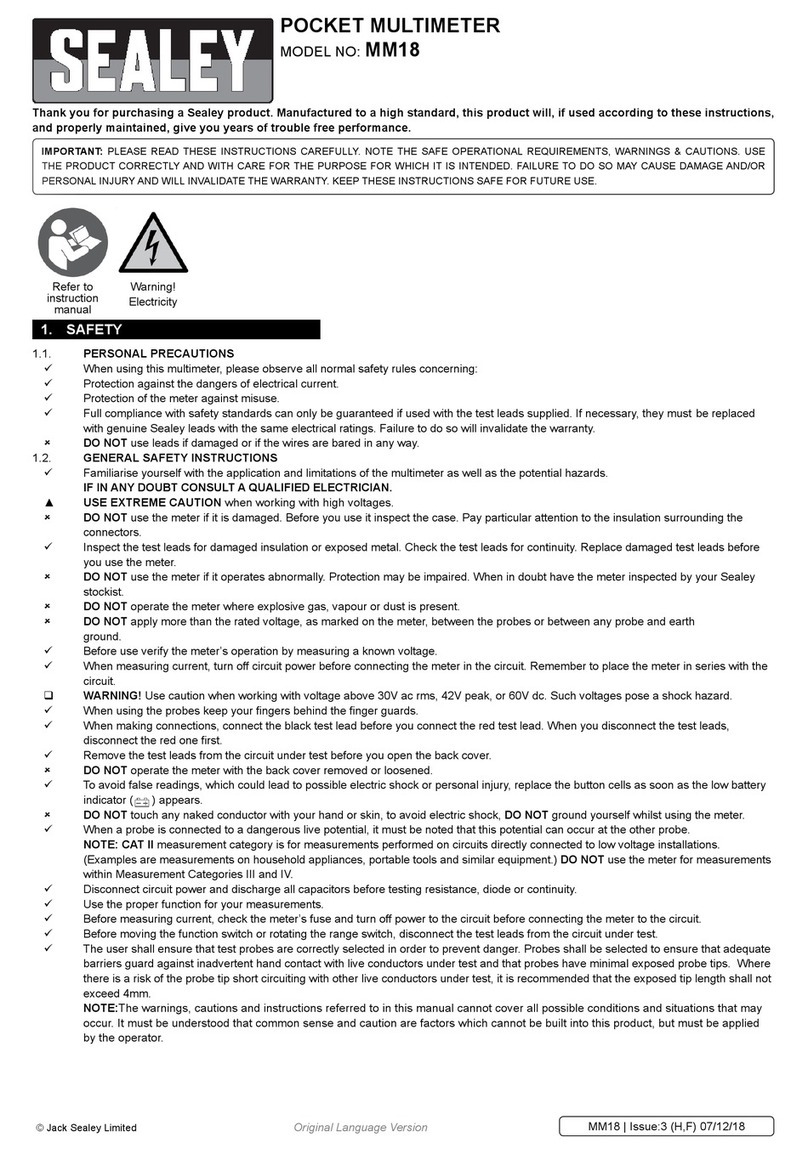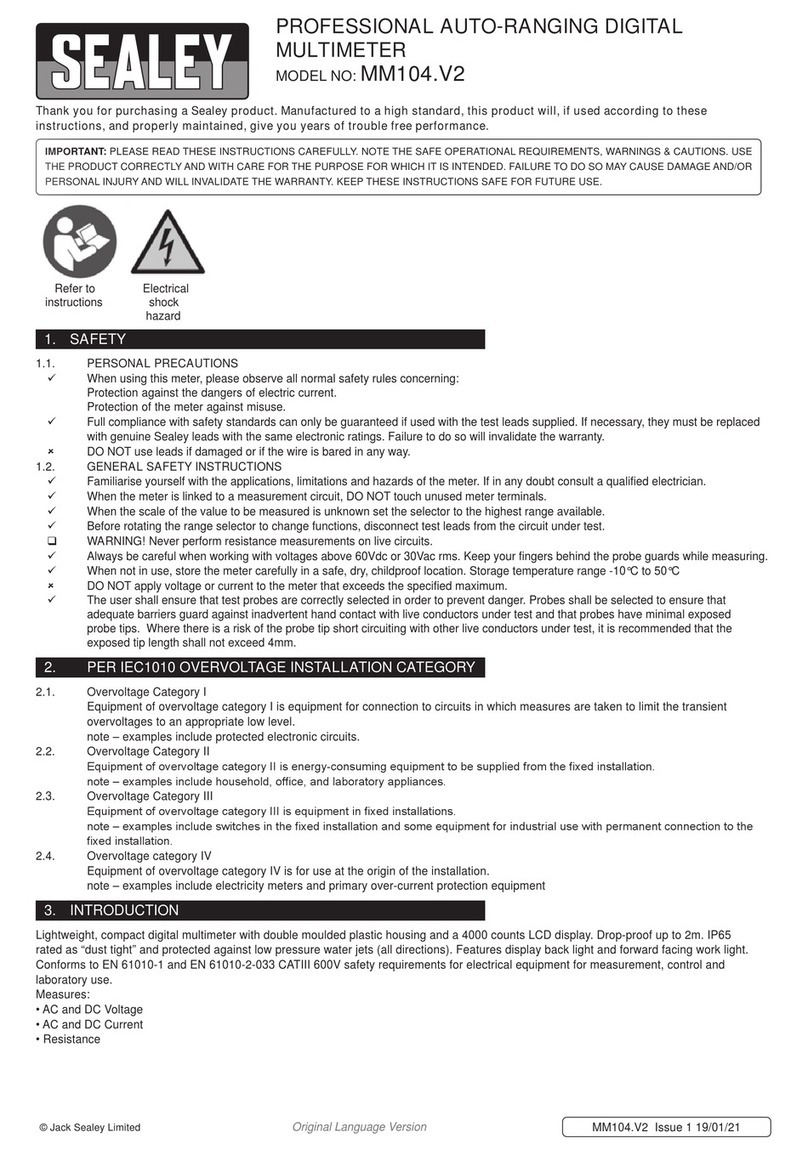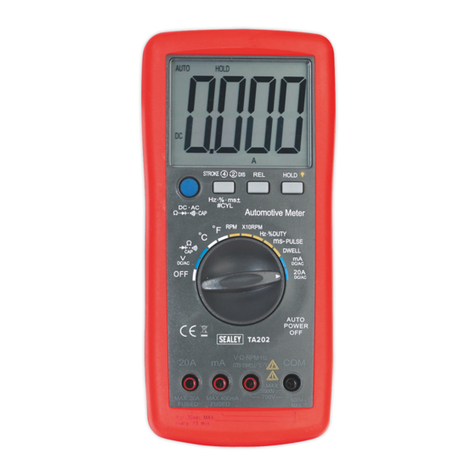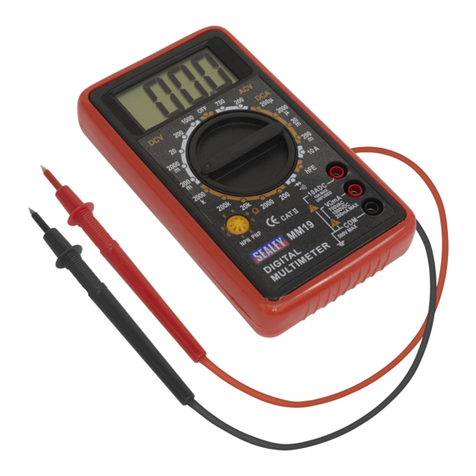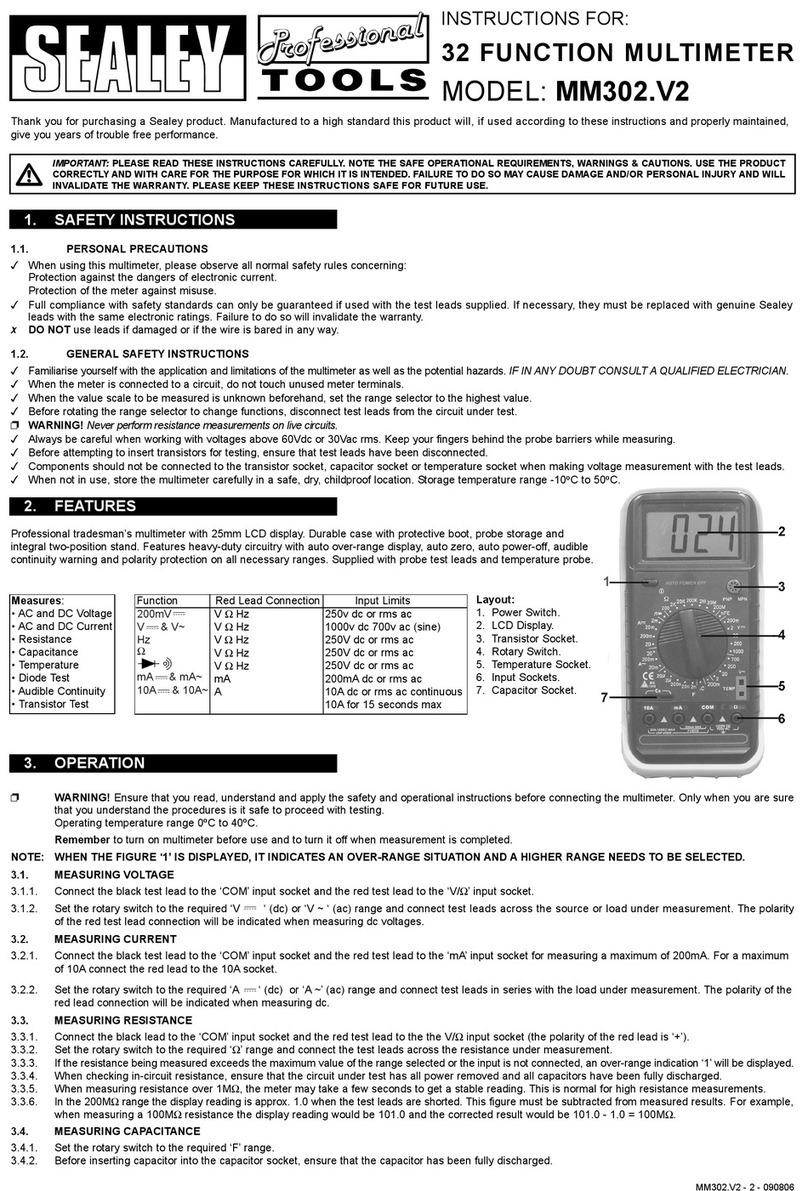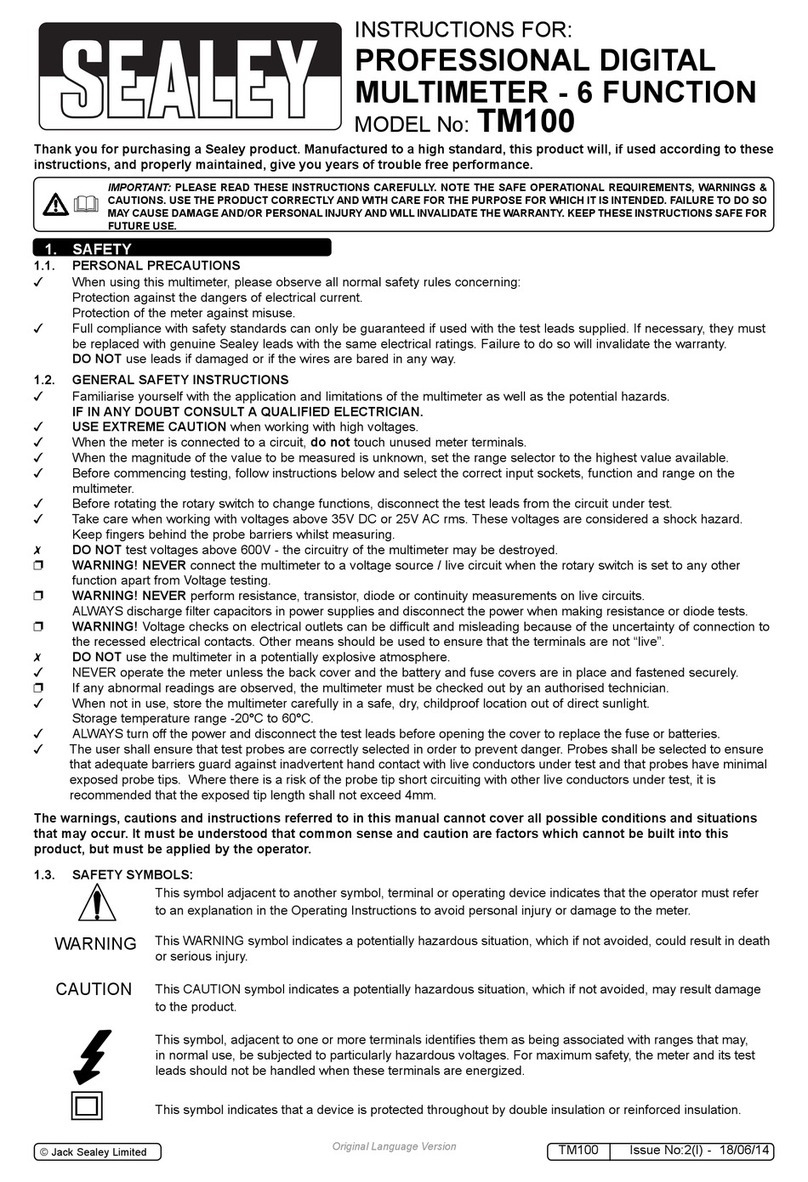
INSTRUCTIONS FOR
PROFESSIONAL DIGITAL MULTIMETER NCVD
7 FUNCTION
MODEL NO: TM101
Thank you for purchasing a Sealey product. Manufactured to a high standard, this product will, if used according to these
instructions, and properly maintained, give you years of trouble free performance.
IMPORTANT: PLEASE READ THESE INSTRUCTIONS CAREFULLY. NOTE THE SAFE OPERATIONAL REQUIREMENTS, WARNINGS & CAUTIONS. USE
THE PRODUCT CORRECTLY AND WITH CARE FOR THE PURPOSE FOR WHICH IT IS INTENDED. FAILURE TO DO SO MAY CAUSE DAMAGE AND/OR
PERSONAL INJURY AND WILL INVALIDATE THE WARRANTY. KEEP THESE INSTRUCTIONS SAFE FOR FUTURE USE.
1. SAFETY
1.1. PERSONAL PRECAUTIONS
9When using this multimeter, please observe all normal safety rules concerning:
Protection against the dangers of electrical current.
Protection of the meter against misuse.
9Full compliance with safety standards can only be guaranteed if used with the test leads supplied. If necessary, they must be replaced
with genuine Sealey leads with the same electrical ratings. Failure to do so will invalidate the warranty.
DO NOT use leads if damaged or if the wires are bared in any way.
1.2. GENERAL SAFETY INSTRUCTIONS
9Familiarise yourself with the application and limitations of the multimeter as well as the potential hazards.
IF IN ANY DOUBT CONSULT A QUALIFIED ELECTRICIAN.
9USE EXTREME CAUTION when working with high voltages.
9When the meter is connected to a circuit, do not touch unused meter terminals.
9When the magnitude of the value to be measured is unknown, set the range selector to the highest value available.
9Before commencing testing, follow instructions below and select the correct input sockets, function and range on the multimeter.
9Before rotating the rotary switch to change functions, disconnect the test leads from the circuit under test.
9Take care when working with voltages above 35V DC or 25V AC rms. These voltages are considered a shock hazard.
Keep fingers behind the probe barriers whilst measuring.
8DO NOT test voltages above 600V - the circuitry of the multimeter may be destroyed.
WARNING! NEVER connect the multimeter to a voltage source / live circuit when the rotary switch is set to any other function apart
from Voltage testing.
WARNING! NEVER perform resistance, transistor, diode or continuity measurements on live circuits.
ALWAYSdischargeltercapacitorsinpowersuppliesanddisconnectthepowerwhenmakingresistanceordiodetests.
WARNING! Voltagechecksonelectricaloutletscanbedifcultandmisleadingbecauseoftheuncertaintyofconnectiontothe
recessed electrical contacts. Other means should be used to ensure that the terminals are not “live”.
8DO NOT use the multimeter in a potentially explosive atmosphere.
8DO NOT operate the meter unless the back cover and the battery and fuse doors are in place and fastened securely.
9If any abnormal readings are observed, the multimeter must be checked by an authorised technician.
9When not in use, store the multimeter carefully in a safe, dry, childproof location out of direct sunlight.Storage temperature range: -20°C
to 60°C.
9ALWAYS turn off the power and disconnect the test leads before opening the covers to replace the fuse or battery.
9Keep product surfaces clean and dry.
9The user shall ensure that test probes are correctly selected in order to prevent danger. Probes shall be selected to ensure that
adequate barriers guard against inadvertent hand contact with live conductors under test and that probes have minimal exposed
probe tips. Where there is a risk of the probe tip short circuiting with other live conductors under test, it is recommended that the
exposed tip length shall not exceed 4mm.
The warnings, cautions and instructions referred to in this manual cannot cover all possible conditions and situations that may occur.
It must be understood that common sense and caution are factors which cannot be built into this product, but must be applied by the
operator.
1.3. SAFETY SYMBOLS
This symbol adjacent to another symbol, terminal or operating device indicates that the operator must refer
to an explanation in the Operating Instructions to avoid personal injury or damage to the meter.
This WARNING symbol indicates a potentially hazardous situation, which if not avoided, could result in death or serious injury.
This CAUTION symbol indicates a potentially hazardous situation, which if not avoided, may result in
damage to the product.
Thissymbol,adjacenttooneormoreterminalsidentiesthemasbeingassociatedwithrangesthatmay,innormaluse,besub
jected to particularly hazardous voltages. For maximum safety, the meter and its test leads should not be handled when these
terminals are energized.
TM101 | Issue 3 12/10/16
Original Language Version
© Jack Sealey Limited
Refer to
instructions
Electrical
shock
hazard
WARNING
CAUTION
